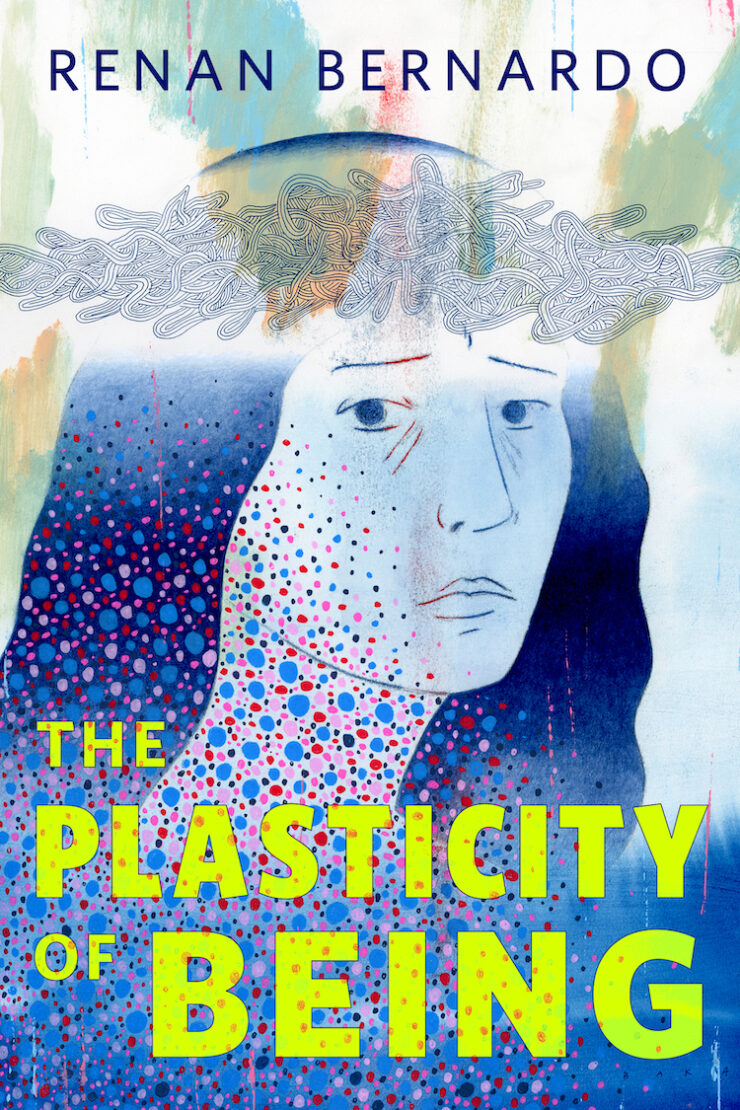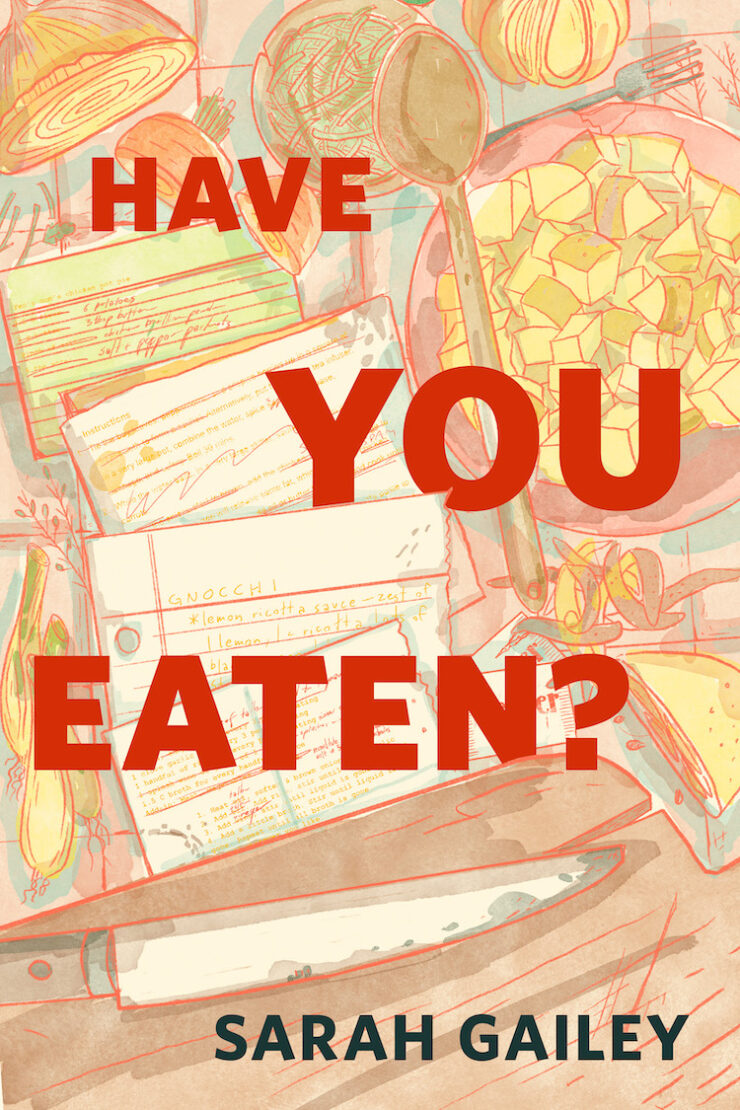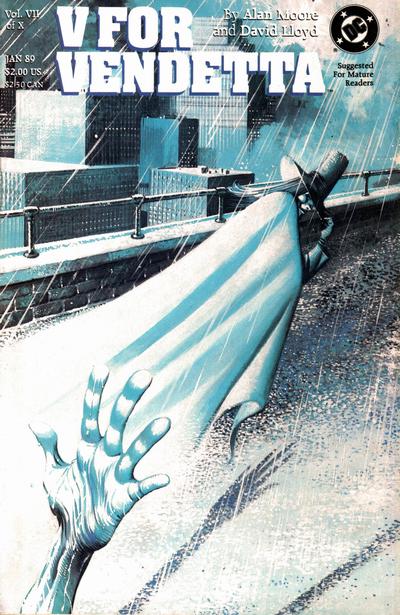Tor.com comics blogger Tim Callahan has dedicated the next twelve months to a reread of all of the major Alan Moore comics (and plenty of minor ones as well). Each week he will provide commentary on what he’s been reading. Welcome to the seventh installment.
I suppose it makes sense to begin this week with some words from Alan Moore himself, specifically regarding the in-the-news use of the Guy Fawkes mask within the contemporary protest movement: “It turns protests into performances. The mask is very operatic; it creates a sense of romance and drama.” That’s Moore as quoted in an article a few weeks back from The Guardian about the iconic role of V for Vendetta and the irony of a corporate, mass-produced mask used as an anti-corporate symbol.
I’m engaged in this reread because I want to look back at the Alan Moore books, and see what they have to offer as texts, as artifacts, as narratives, but when the iconic image of the V for Vendetta mask pops up on the 24 hour news channels and inside repurposed Shepard Fairey prints, there’s a deeper cultural reading at stake. And I’ll defer to Moore on what it all means, because his comment on the “operatic” nature of the mask-wearing is pretty spot-on. It’s protest as performance, demonstrating self-awareness of the role of the protestor and yet providing an anonymity symbolizing defiance of authority. It’s not quite the comic book character come to life not even close, really because (a) it’s far more likely that any potential mask-wearer would be more familiar with the Wachowski-Brothers-produced film than with the comic that inspired it, and (b) the Alan Moore/David Lloyd character of V is a romantic hero only in the literary sense. He’s not a guy you’d want to emulate. Not by the end of the story.
So let’s look at the final five books of V for Vendetta, and see what kind of hero and what kind of commentary on the world they actually present.
Absolute V for Vendetta, Books VI-X (DC Comics, 2009)
Book VI begins with “Vengeance,” in its title at least, if not in deed, interestingly enough. And the vengeance of the chapter heading seems to point toward Evey’s failed attempt at shooting her lover’s murderers in the back. Because Evey had been happy, perhaps, for a few moments in Book V, or at least connected to someone Gordon who could offer her safety and stability. That didn’t last long in this futuristic London, and Gordon is soon murdered by an unexpected sabre through his front door.
So in this comic book series which is about one man’s elaborate, theatrical quest for vengeance against those who imprisoned him, in the one chapter with “Vengeance” in the title, there’s no actual vengeance to be found. Just an attempt one foiled by V himself, who abducts and provides a false prison for Evey. But it’s one that feels real. And that’s the point.
This whole sequence, with Evey in a prison manufactured by V, living a caged lie in a cruel imitation of V’s own experience in the Larkhill Resettlement Camp, feels longer than it actually is. I remember it being a major part of the ten issue series, and, even rereading it again, it had a vicious power that makes it feel like a major percentage of the pages of the series. But it isn’t. It’s really only fifteen pages of Book VI and the first six pages of Book VII. It’s not even quite a full issue’s worth of content, a mere 10% of the total package at best, and yet the imprisonment and psychological torture of Evey at the hands of V resonates as the centerpiece of the entire story. Emotionally, it has such a burdensome weight on the narrative that it feels like 40-50% of this Absolute Edition is all Evey torture. But it’s not.
So why does it carry so much weight?
Probably because it’s grueling. Evey, who has been nothing but a victim in V for Vendetta from the moment we met her (other than her naïve assistance to V and her one feeble attempt at revenge thwarted by V), is established as the reader’s gateway into V’s world. She’s the “audience identification” figure, and if she were slightly more proactive, she might arguably be the protagonist of the story. But she’s not the ever-faceless, ever-nameless V is and the protagonist of the story tortures her, psychologically but also physically (how much time has passed in the sequence we do not know, but you can see her become desperately thin and weak, so it must have been months, at least). So that means that V, in essence, tortures us. And even twenty-one total pages of that feels like far too much.
I suppose that’s the point. Alan Moore’s point, and V’s point. To put the reader, to put Evey, in his position. To not simply explain what caused his pain and suffering, but to show it happening to us, or to a character we have been conditioned to identify with.
That’s why it’s so brutal, because we feel it, in a way that we simply do not when we learn about fragments of V’s past from other scenes in the series.
But while it’s a powerful effect and one that few writers in any medium have successfully pulled off it’s not okay. I realize that it’s not supposed to be okay. It’s supposed to be unsettling. But here’s where Moore fails: not in the cause, but in the effect.
We are so bound to Evey, and we feel her suffering so deeply (thanks to Moore and Lloyd’s masterful storytelling), that when she learns that V has contrived this whole Live Action Role-Playing torment, her immediate devastation makes sense, but then she capitulates too easily to V’s easy moral.
“The door of the cage is open, Evey all the blindfolds are gone become transfixed, become transfigured…forever,” he says, as she, naked on the rooftop, opens her arms to the world.
That’s it. In a series that has been so methodical and bleak and unyielding, this facile turn toward acceptance from Evey is almost too much to bear. It’s one thing to set up a character to take the audience through a journey of suffering, but it’s something else entirely to provide such an easy resolution. Oh, Evey learned that the world is horrible and somehow still wonderful? And now she basically has not personality left for the remainder of the series, and she will eventually just take over V’s position as swashbuckling anarchist? Okay. Huh.
It’s not that Evey, as presented in the series, has the strength of will to defy V and provide any effective counterbalance. It does follow an in-character logic that she would be brainwashed by him so easily. But it derails the reader’s connection to the story. It derailed my connection with the story, at least, and in rereading it, I realized why I’ve always felt that V for Vendetta might be a masterpiece, but it started a lot stronger than it ended. It’s not just that it stalled at Warrior and took years to return. It’s not that the final sections were originally released in a colorized format which softened the effect.
It’s that Alan Moore crafts a descent into suffering casting a light on the kind of cruelty we inflict upon one another in this world we live in—and asks you to join him in the exploration, then, at the lowest point, he pins his characters to the wall and starts a puppet show about what happens next. He doesn’t go deeper after the Evey-in-prison sequence. He goes shallower, and starts barreling toward the conclusion of the story.
Structurally, it’s like that bit of Hamlet where all of a sudden the inaction hero survives a pirate attack and negotiates his return to Denmark, all off-stage, between scenes. Shakespeare had to get his prince back into the thick of the courtly intrigue. Alan Moore needed to get his protagonist back to the final stages of revenge. Shakespeare put his cheap twist out of the audience’s way, conveyed it in a letter. Moore doesn’t resort to such cheap narrative tricks, but the result isn’t much less clumsy.
Still, I suppose any comparison to Shakespeare is hardly condemnation, even if the escape-from-pirates is the goofiest part of the best play ever written.
That leaves us with V for Vendetta Books VIII, IX, and X, where our “hero” gets his revenge, and as is the case in a tragedy like this one, falls in the process, a victim of his own hubris.
One of the things Moore does so powerfully with this story is to create an oppressive threat from his antagonists without them actually doing much of anything. They have identities, they have roles to play within the story, but other than Inspector Finch, who makes the interesting choice to take LSD while reconstructing V’s past at Larkhill, the characters set up as antagonists are cogs in a machine. They are the machine, really, whether they enact that role through their control of the Fate computers even back in the 1980s, Moore could foresee that we’d all be controlled by computers connected together or through their methodical, completely uninspired routines. They lack imagination.
One obvious reading of V for Vendetta is that it’s a story about art over industry, creativity over machinery. It’s Romantic in that way, and even as V takes lethal shots to his chest, he ominously declares, “There’s no flesh or blood within this cloak to kill. There’s only an idea. / Ideas are bulletproof.” V, hoarder of art and artifacts from the recent past, the only one in this futurescape who seems to understand the value of music and passion (as opposed to noise and sex) and literature and painting and old jukeboxes and flamboyant costumes he’s at odds with a world that would cage him. A world that did cage him, simply because he was different, and therefore a danger to the hegemony.
In the end, it’s a simple dystopian narrative: the individual who recognizes that society, in attempting to make everything safe, has taken away everything that makes life worth living. Moore smartly decorates the basic narrative by using a faceless hero a self-proclaimed “idea” and including a revenge plot to color the through-line, but it’s 95% George Orwell and 5% Gilbert and Sullivan by the time it’s all wrapped up.
But isn’t that what this story is about? Using the art of the past to awaken life in the present (or future)?
V for Vendetta certainly engages with the Margaret Thatcher Britain in which Alan Moore lived at the time of its writing, and it’s the most overtly political text of his early career. But it ultimately doesn’t offer any answers beyond a healthy distrust of oppressive policies and an awareness of the anarchic power of the arts, and merely gives us Evey-in-the-role-of-V and a new pupil for her to teach. The cycle continues, even as Inspector Finch wanders down a darkened road towards who-knows-where.
Earlier, I wondered if this was a moral comic or if that even mattered, and I think it is and it does. V is no one to emulate, though, and to mistake his psychopathy for heroism is to fall into the trap the weak-willed Evey fell into herself. But Moore doesn’t position V as a force of righteous morality. He wears the mask of an anarchy for a reason, not just because it looks cool. And while the idea of pure freedom is worthwhile, inflicting torture and humiliation on another person just to achieve that end is not something this book advocates, even though it dabbles with those notions for a time.
No, I think the true morality of V for Vendetta exists in the questioning. The act of asking, of looking, of exploring possible answers. The characters that do it in the story are the ones who have a chance at redemption. Everyone who goes along with what’s accepted, or blindly take what they’re told, those are the ones who suffer the most. And that’s the true role of the artist in society, to ask the questions that matter most, and then leave us to find out how to explore answers to them.
After rereading the book again, I may not like it as much as I once did, but I still respect it in the end. It aspires, and almost succeeds.
NEXT TIME: Alan Moore’s Lovable Alien? SKIZZ!
Tim Callahan writes about comics for Tor.com, Comic Book Resources, and Back Issue magazine. Follow him on Twitter.










